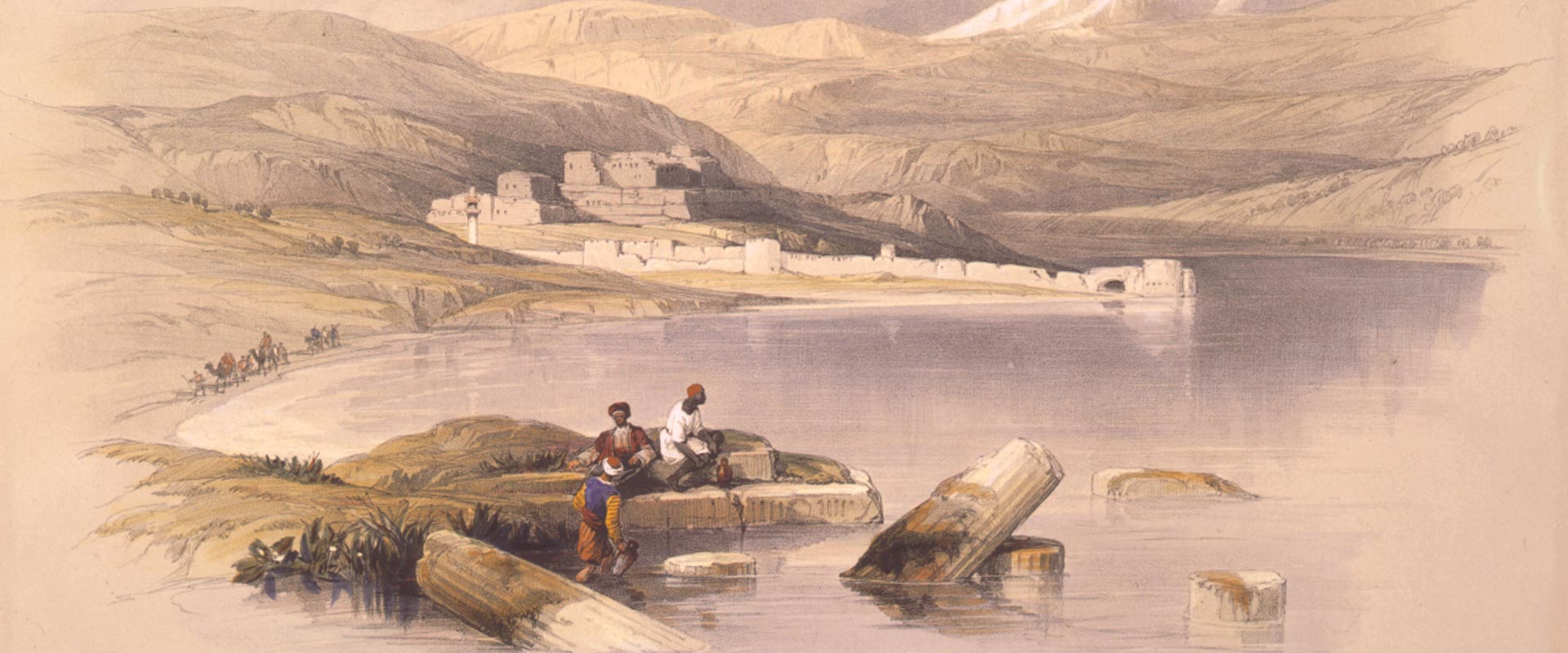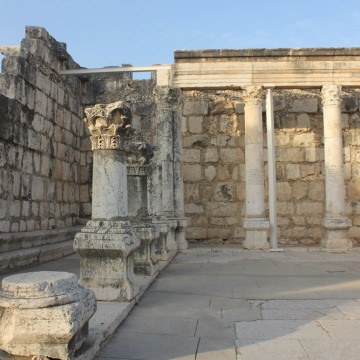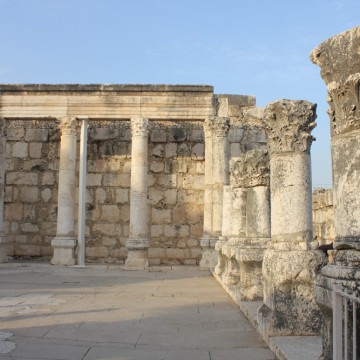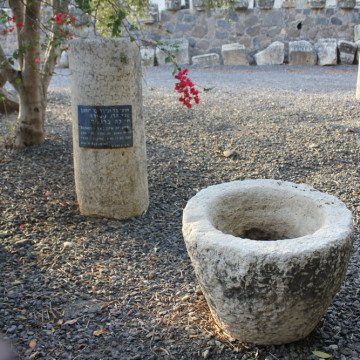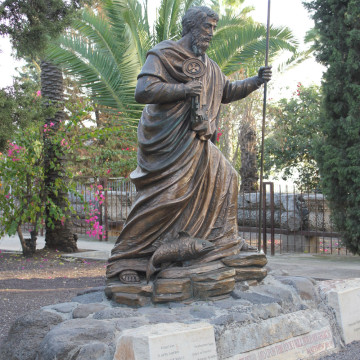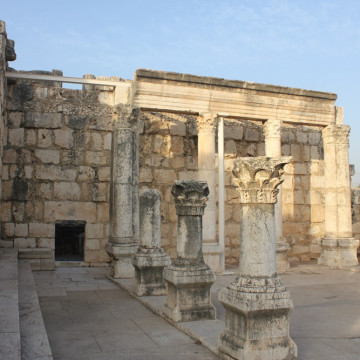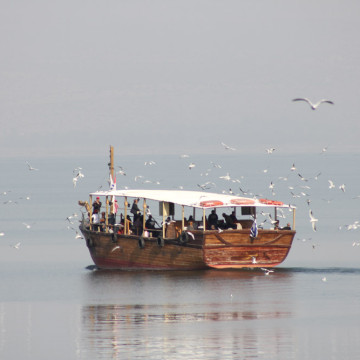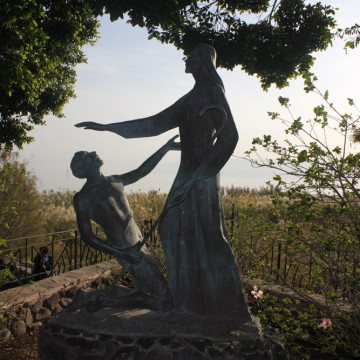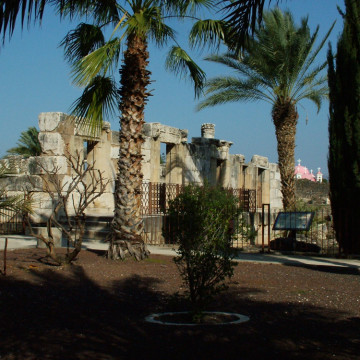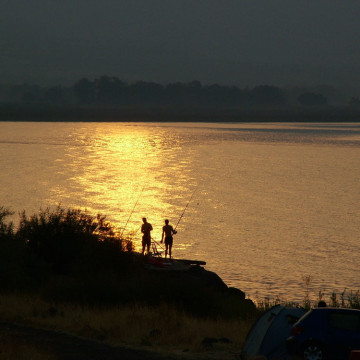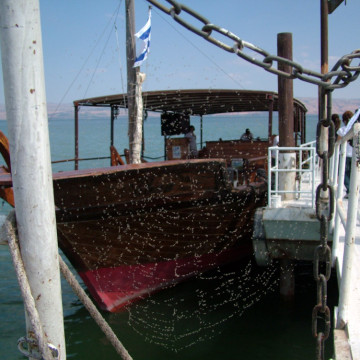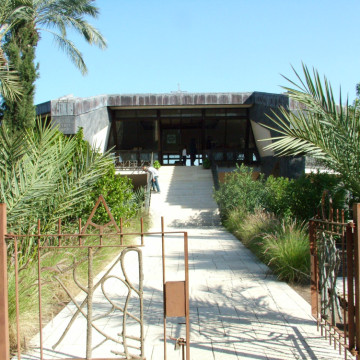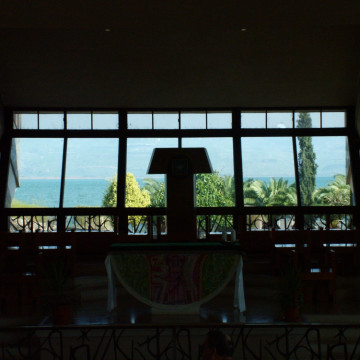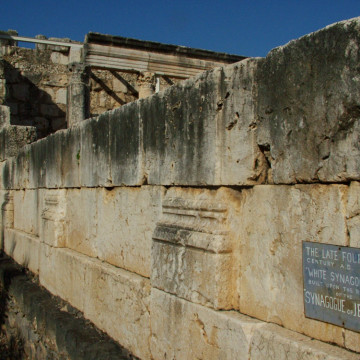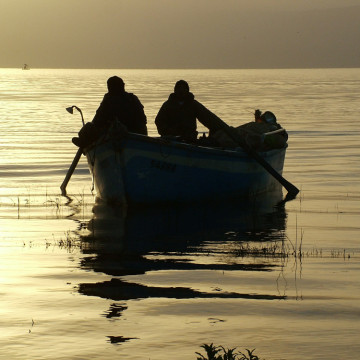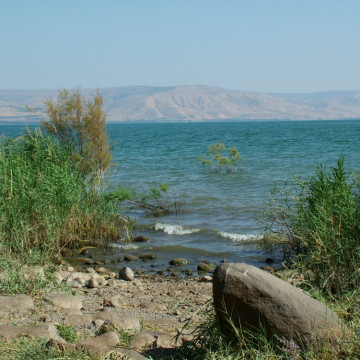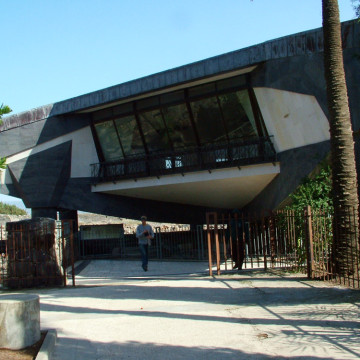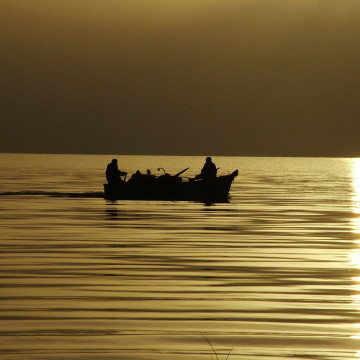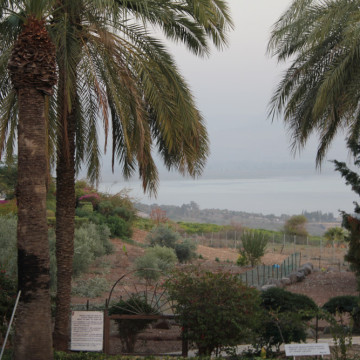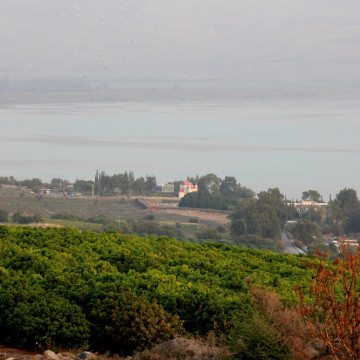Capernaum, the pearl of Galilee
Capernaum is the most important site after Jerusalem to Christians around the World, it was the town of the Messiah and also the place where Jesus made great part of his miracles describes in the Christian Bible.
Thousand of believers visit it small place every year and transform it one of most important pilgrim station outside Jerusalem.
And leaving Nazareth, He came and dwelt in Capernaum, which is by the sea, in the regions of Zebulun and Naphtali, that it might be fulfilled which was spoken by Isaiah the prophet, saying: ‘The land of Zebulun and the land of Naphtali, the way of the sea, beyond the Jordan, Galilee of the Gentiles: the people who sat in darkness saw a great light, and upon those who sat in the region and shadow of death light has dawned.’ From that time Jesus began to preach and to say, ‘Repent, for the kingdom of heaven is at hand.’” (Matthew 4:13–17)
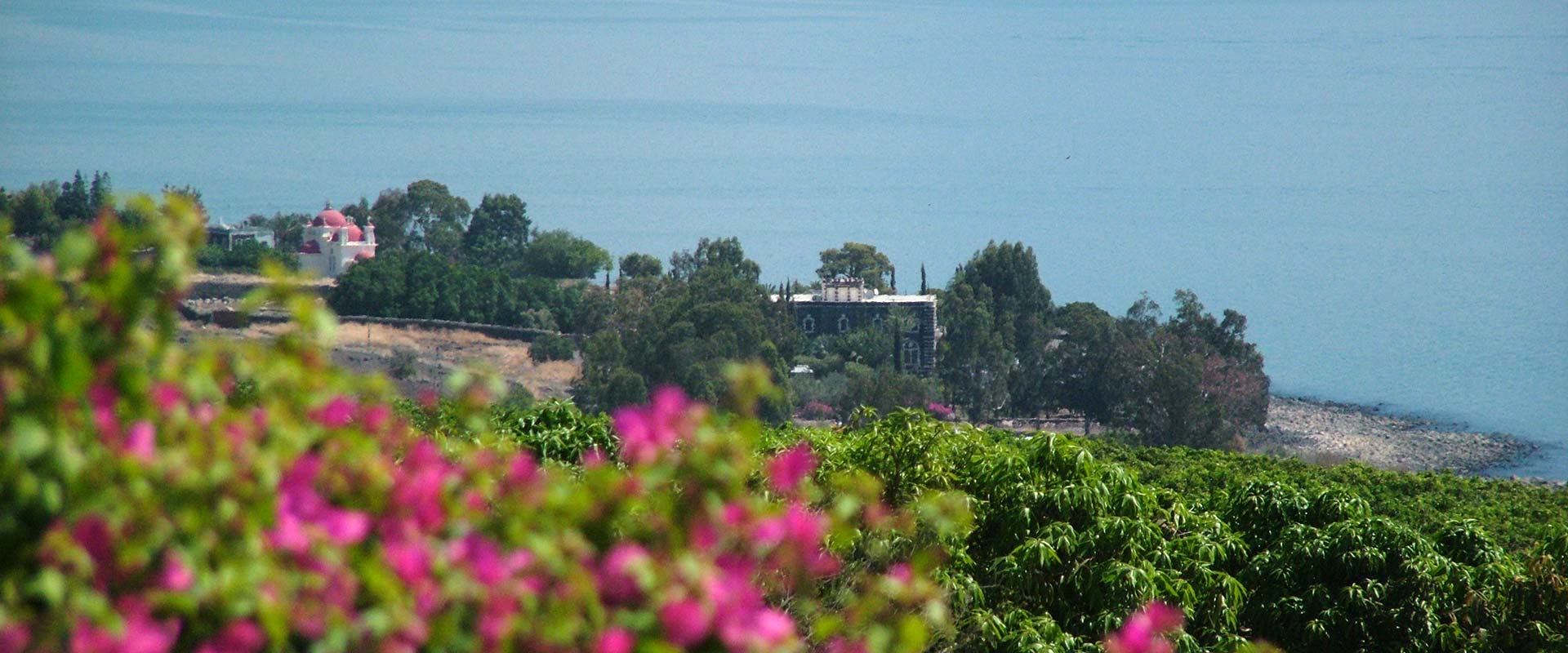
Capernaum first started to be inhabited during the 3rd Millennium BC in the early Bronze period. It was a small village of several houses, which was in the area controlled by the Biblical city in Tell Kinneret, located 3 KM to the west. It continued through the 2nd Millenium, as surfaced in the excavations, in the area around the center of the Roman village. During the Israelite/Iron period (1200-587BC) there was a break in the population, which was restored in the 5th C BC (the period of the returns of the exiles to Zion).
 The village then expanded in the Hellenistic period (4th-3rd C BC), gradually replacing the focus from Tell Kinneret - as most of the Tells in Israel at that time. It was designed according to that period's urban design of straight lines, which was built in parallel to the main Roman imperial highway, that crossed the village on the northern side. Capernaum grew larger at the time of Jesus (early Roman period, 1st C AD), and a synagogue was built in the center of the village. It reached its peak in the Byzantine period when the grand white-stone Synagogue was built (end of the 4th C AD) over the earlier synagogue. An octagon church was built in the 5th C AD at the location of St Peter's house, and serviced the Christian citizens. At that time the village covered about 60 Dunams (6 Hectares), with a population of about 1,500. Note that the excavated area that is seen today is only 1/3 of the entire size of the village.
The village then expanded in the Hellenistic period (4th-3rd C BC), gradually replacing the focus from Tell Kinneret - as most of the Tells in Israel at that time. It was designed according to that period's urban design of straight lines, which was built in parallel to the main Roman imperial highway, that crossed the village on the northern side. Capernaum grew larger at the time of Jesus (early Roman period, 1st C AD), and a synagogue was built in the center of the village. It reached its peak in the Byzantine period when the grand white-stone Synagogue was built (end of the 4th C AD) over the earlier synagogue. An octagon church was built in the 5th C AD at the location of St Peter's house, and serviced the Christian citizens. At that time the village covered about 60 Dunams (6 Hectares), with a population of about 1,500. Note that the excavated area that is seen today is only 1/3 of the entire size of the village.
The village prospered in the Roman and Byzantine periods, and its citizens were mainly fishermen (as most of Jesus apostles), farmers, and people that provided services to the Roman road and caravans, including tax collection (as was Matthew).
Capernaum was partially destroyed in the Persian conquest in the VII Century AD. The synagogue and church were destroyed in the Arab period (VII - XII Century AD), but the village continued to function for some time. It then was totally ruined.
The actual area closed of Capernaum was purchased by the Franciscans Ordem in 1894. 2/3 of this entire area of ruins were purchased, while the other third was purchased by the Greek Orthodox Church. The excavations were was conducted in several seasons (1905-1915, 1968-1984) by many expeditions.

Capernaum in other references
By: Kaufmann Kohler, Frants Buhl
 Small town by the Lake of Gennesaret, mentioned in the Gospels as the home of Jesus, where he resided after his rejection by his Nazareth townsmen (Matt. iv. 13, viii. 5-17, ix. 1, xi. 23, xvii. 24; Mark i. 21; Luke vii. 1 et seq.; John vi. 17; Eccl. R. to i. 6 and to vii. 26, as the dwelling-place of the Minim or Christian exorcists of the second century. See also Derenbourg, "Essai sur l'Histoire et la Géographie de la Palestine," p. 362). According to these passages it lay close by the lake, and contained a synagogue built by a centurion living there. The "receipt of custom" nearby (Matt. ix. 9) probably had made it necessary to station Roman soldiers in the town. The exact site of the town can not be definitely fixed. Josephus speaks of a spring "Kafarnaum," which watered the fertile plain of Gennesaret (now plain of Ghuwair) on the northwestern side of the lake. Hence the spring must be looked for in 'Ain al-Tabighah, on the northern slopes of the plain, since water was in olden times carried down to the plain through a conduit now in ruins. Accordingly the ruins of El-Minyah, in the extreme northern part of the Gennesaret plain, have been taken by some as the site of Capernaum. This assumption is further supported by the statement of the pilgrim Arculfus (middle of the seventh century; Tobler and Molinier, "Itinerarium Hierosolymitanum," p. 183) that Capernaum lay at the base of the southern slope of a mountain. This is not decisive, however, since Arculfus did not visit the town itself, but saw it from a distance, and his further remarks can not be applied to the site of the ruins of Minyah.
Small town by the Lake of Gennesaret, mentioned in the Gospels as the home of Jesus, where he resided after his rejection by his Nazareth townsmen (Matt. iv. 13, viii. 5-17, ix. 1, xi. 23, xvii. 24; Mark i. 21; Luke vii. 1 et seq.; John vi. 17; Eccl. R. to i. 6 and to vii. 26, as the dwelling-place of the Minim or Christian exorcists of the second century. See also Derenbourg, "Essai sur l'Histoire et la Géographie de la Palestine," p. 362). According to these passages it lay close by the lake, and contained a synagogue built by a centurion living there. The "receipt of custom" nearby (Matt. ix. 9) probably had made it necessary to station Roman soldiers in the town. The exact site of the town can not be definitely fixed. Josephus speaks of a spring "Kafarnaum," which watered the fertile plain of Gennesaret (now plain of Ghuwair) on the northwestern side of the lake. Hence the spring must be looked for in 'Ain al-Tabighah, on the northern slopes of the plain, since water was in olden times carried down to the plain through a conduit now in ruins. Accordingly the ruins of El-Minyah, in the extreme northern part of the Gennesaret plain, have been taken by some as the site of Capernaum. This assumption is further supported by the statement of the pilgrim Arculfus (middle of the seventh century; Tobler and Molinier, "Itinerarium Hierosolymitanum," p. 183) that Capernaum lay at the base of the southern slope of a mountain. This is not decisive, however, since Arculfus did not visit the town itself, but saw it from a distance, and his further remarks can not be applied to the site of the ruins of Minyah.
But Capernaum might also be identified with the ruins close by the Tabighah spring, discovered by Schumacher. However, Theodosius of the sixth century says that Capernaum was two Roman miles from the Heptapegon (or Tabighah) spring. Jerome also says that Capernaum was two miles distant from Chorazin (probably the Kerazah of to-day). These figures apply to the well-known ruins of Tell Hum, found near the lake and rapidly disappearing. Among the blocks of black basalt are found the remains of a marble synagogue, which show that a city once stood on this spot; and as the second part ("hum") of this name is also found in "Kefar Naḥum," many scholars identify these ruins with Capernaum. If the name "Tell Hum" was originally "Tenhum," this identification is made more probable on linguistic grounds, especially since "Kefar Tanḥum" and "Kefar Teḥumin" are frequently given as variants for "Kefar Naḥum." [See Kohut, "Aruch Completum,"s.v.  ; Neubauer "G. T." p. 221; Grätz, "Gesch. der Juden," iii. 307 et seq.—k.] This location would harmonize with the statement of Josephus ("Vita," § 72) that, after his accident on the Jordan, he was carried to a village, Cepharnome (Kephar Nome). But the reading here is not certain (compare Niese), and, moreover, Capernaum was a town, not a village.
; Neubauer "G. T." p. 221; Grätz, "Gesch. der Juden," iii. 307 et seq.—k.] This location would harmonize with the statement of Josephus ("Vita," § 72) that, after his accident on the Jordan, he was carried to a village, Cepharnome (Kephar Nome). But the reading here is not certain (compare Niese), and, moreover, Capernaum was a town, not a village.
Bibliography:
- Cheyne and Black, Encyc. Bibl.;
- Hastings, Dict. Bible, and the literature given there.

